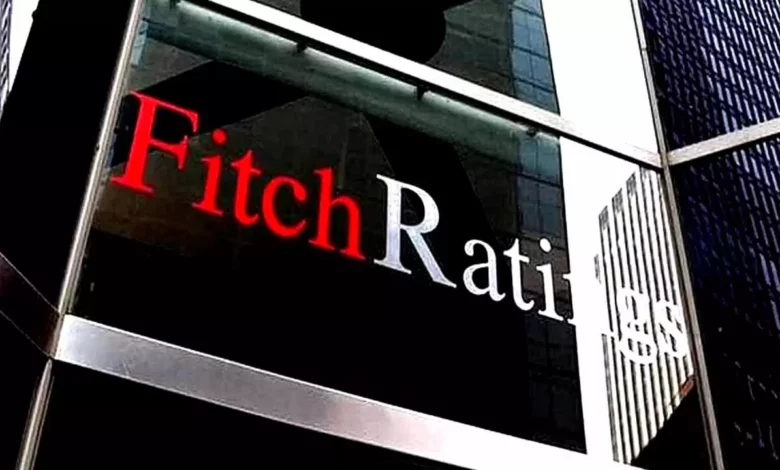India’s external debt is roughly one-fourth that of the median ‘B.B.B.’ rated sovereigns.

India’s external debt is roughly one-fourth that of the median ‘B.B.B.’ rated sovereigns.
In 2Q22, gross external debt was 18.6% of G.D.P., which is low when compared to the median of 72% for ‘B.B.B.’ rated sovereigns in 2021. “Fitch, a global ratings firm, stated Sovereign exposure is low, with only about 4% of G.D.P. in multilateral financing. In September, reserve cover was approximately 8.9 months of imports.
Despite a drawdown of more than $100 billion in the country’s forex reserves in less than a year, India remains on a strong footing in terms of external sector metrics.
Foreign investor holdings of domestic sovereign debt account for less than 2% of total holdings, reducing the risk of spillovers to the wider market if they seek to reduce their exposure,” it said.
In September, reserve cover was approximately 8.9 months of imports. This is higher than during the 2013 “taper tantrum,” when it was around 6.5 months, and allows the authorities to use reserves to smooth out periods of external stress.
“Large reserves also provide reassurance about the ability to repay debt. Short-term external debt due amounts to only about 24% of total reserves, “Fitch stated.
Significantly, India’s foreign exchange reserves fell by more than $100 billion in less than a year as the central bank was forced to sell dollars to defend the rupee, and it also lost significant value as non-dollar assets in the reserves were revalued.
The R.B.I. recently reiterated that it does not have an exchange rate target level but that reserves will be used to manage exchange-rate volatility. In the short term, this will most likely erode reserve buffers further, but the extent and duration of the intervention will determine the impact.
The main reason for the current R.B.I. tightening is the domestic factor. “However, the risks to the current forecast of India’s repo rate peaking at 6.0% in FY24 are skewed to the upside.” Fitch said, “because there is a significant risk of U.S. rate hikes exceeding our assumptions, putting further downward pressure on the rupee and increasing imported price inflation.”
External pressures pose a limited risk to India’s sovereign rating: Fitch Ratings expects India’s foreign-exchange reserves to remain strong.
According to Fitch Ratings, India’s external buffers appear adequate to mitigate risks associated with the United States’ rapid monetary policy tightening and high global commodity prices.
The rating agency said that “external funding has become less prominent in India’s credit profile” but that “foreign exchange reserves remain resilient and India’s current account deficit is at sustainable levels.” We expect it to be maintained,” he said.
“Public finances continue to be the primary driver of the rating, and these developments have only a minor impact,” it adds. “This is especially true given India’s relative isolation from global volatility as a result of the sovereign’s reliance on external financing.”
This comes at a time when India’s foreign reserves are expected to fall by nearly $101 billion to around $533 billion between January and September 2022.
According to Fitch, the decline reversed much of the reserve accumulation during the Covid-19 pandemic, reflecting valuation effects, a widening current account deficit, and R.B.I. intervention to support the Indian rupee exchange rate.
“In September, reserve cover was about 8.9 months of imports.” This is higher than during the ‘taper tantrum’ of 2013, when it stood at about 6.5 months, and allows the authorities to use reserves to smooth periods of external stress,” according to the rating agency. “Large reserves also provide reassurance about the ability to repay debt.”
The amount of short-term external debt due is only about 24% of total reserves.”
According to Fitch, India’s gross external debt stood at 18.6% of G.D.P. in the second quarter, which is low compared to the median of 72% for ‘B.B.B.’ rated sovereigns in 2021. “Sovereign exposure is low, with only about 4% of G.D.P. in multilateral financing.” Foreign investor holdings of domestic sovereign debt account for less than 2% of total holdings, reducing the risk of spillovers to the wider market if they seek to reduce their exposure,” it adds.

According to the rating agency, India’s current-account deficit will rise to 3.4% of G.D.P. in the fiscal year ending March 2023, up from 1.2% in FY22.
Imports have increased due to increased domestic demand and high oil and coal prices. Meanwhile, export growth has slowed from the blistering pace seen in January-June 2022, as prices for steel, iron ore and agricultural products have fallen.
“Recessions in key export markets such as Europe and the United States will dampen short-term export prospects. However, we expect the current-account deficit to fall to 2.0% of G.D.P. in FY24, as lower global energy prices reduce imports. Our optimistic medium-term economic growth forecast for India should make it easier to finance the deficit, particularly through FDI, “Fitch says
The rating agency also forecasts India’s current account deficit to be larger than before the pandemic in the next few years. We also expect the R.B.I. to use reserves to manage currency volatility. “In the short term, this is likely to continue to erode reserve buffers, but the impact will depend on the scale and duration of the intervention,” Fitch said.
Fitch Ratings says India’s external buffer is sufficient to mitigate risks associated with rapid U.S. monetary tightening and global commodity price hikes, with limited sovereign rating risk from external pressures.

It expects the country’s foreign exchange reserves to remain strong and the current-account deficit (CAD) to remain stable this fiscal year at 3.4 percent of G.D.P., up from 1.2 percent the previous year.
According to Fitch Ratings, “India’s external buffer appears sufficient to mitigate the risks associated with a rapid U.S. monetary tightening and high global commodity prices.” The rating said public finances remained the main reason for the rating, with India’s limited reliance on external funding making it relatively immune to global volatility.
Between January and September 2022, India’s foreign reserves fell by nearly USD 101 billion but remained substantial at around USD 533 billion.
The decline largely reversed reserve build-up during the pandemic and is a result of valuation effects, CAD expansion, and RBI intervention to support the rupee exchange rate.
“In September, reserve cover was about 8.9 months of imports.” This is higher than during the 2013 “taper tantrum,” when it was around 6.5 months, and allows the authorities to use reserves to smooth out periods of external stress.
“Large reserves also provide reassurance about the ability to repay debt.” “Short-term external debt due is only about 24% of total reserves,” according to Fitch.
edited and proofread by nikita sharma




